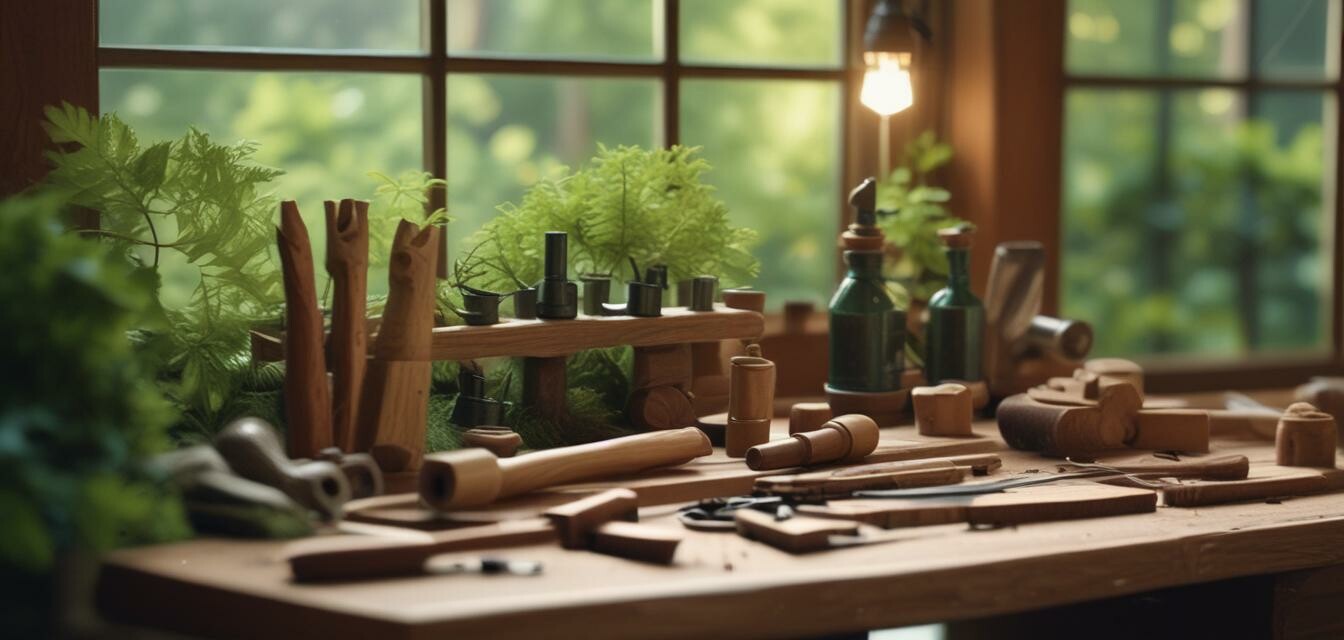
How Green Building Practices Are Influencing Woodworking
- Green building practices are guiding the choice of sustainable materials in woodworking.
- Emerging trends emphasize the use of reclaimed wood and eco-friendly finishes.
- Innovative tools are being developed to reduce waste in woodworking.
- Eco-conscious consumers are driving demand for sustainable woodworking practices.
- Networking within the woodworking community is essential for sharing knowledge and methods.
As we move towards more sustainable living, green building practices are playing a crucial role in how woodworking is evolving. The demand for eco-friendly materials and processes not only caters to environmentally conscious consumers but also pushes artisans towards innovative woodworking practices that align with modern sustainability goals.
The shift towards sustainability in woodworking
In 2025, woodworking is being transformed by sustainable practices that are reshaping the industry. Here are some notable shifts:
- Use of reclaimed wood: This practice reduces the need for new timber, thus preserving forests.
- Eco-friendly tools: Manufacturers are creating tools designed to reduce waste and energy consumption.
- Natural finishes: Non-toxic finishes are becoming the norm, allowing for healthier indoor air quality.
Impact of eco-friendly materials
Green building practices emphasize the importance of materials that have a smaller environmental footprint. This not only impacts the selection of wood used in projects but also influences consumers’ preferences.
| Material | Impact | Advantages |
|---|---|---|
| Reclaimed Wood | Reduces deforestation | Unique character, cost-effective |
| Bamboo | Fast renewable resource | Strong, lightweight, sustainable |
| FSC-Certified Wood | Responsible forestry practices | Environmentally friendly, dependable |
| Engineered Wood | Less wasteful process | Durable, efficient use of raw materials |
Innovation in tools and techniques
Alongside materials, there is also a significant shift in the tools and techniques used in woodworking. The development of innovative tools that are specifically designed for sustainability is on the rise. Some notable advancements include:
- Tools that minimize wood waste.
- Motorized hand tools that are more energy-efficient.
- Technology-driven solutions that help artisans design with sustainability in mind.
The role of community in promoting green practices
Networking within the woodworking community has become essential for sharing knowledge about green practices. Community workshops and online platforms are great places to learn about sustainable techniques. These forums frequently discuss the latest buying guides related to eco-friendly woodworking materials, helping artisans make informed decisions.
Industry collaborations
Partnerships between woodworkers and manufacturers are helping streamline the adoption of sustainable practices. By collaborating, artisans can access better resources and tools that enhance their projects.
Conclusion: The future of woodworking in a green era
As the focus on sustainability grows, woodworking is taking on a new ethos. This shift not only benefits the environment but also introduces artisans and consumers to a wealth of new materials and techniques. By staying engaged with the community and current trends, woodworkers can continue to evolve and adhere to environmentally friendly practices.
Tips for embracing green woodworking practices
- Start small: Incorporate a few eco-friendly products into your next project.
- Stay informed: Follow news in the woodworking community and consider best practices.
- Experiment: Try using new sustainable materials in your projects.
- Join forums: Engage with other woodworkers to exchange tips and success stories.
Pros
- Environmentally friendly builds
- Cost savings from using reclaimed materials
- Healthier indoor environments with non-toxic finishes
Cons
- Can require more effort to source sustainable materials
- Higher upfront costs for eco-friendly tools
- Skill development needed to work with new materials
For more information on sustainable practices in woodworking, check out our articles on wood types and materials or browse through our workshop safety gear recommendations.
With these insights into how green building practices are influencing woodworking, it’s evident that the future holds exciting prospects for artisans aiming for sustainable craftsmanship.



